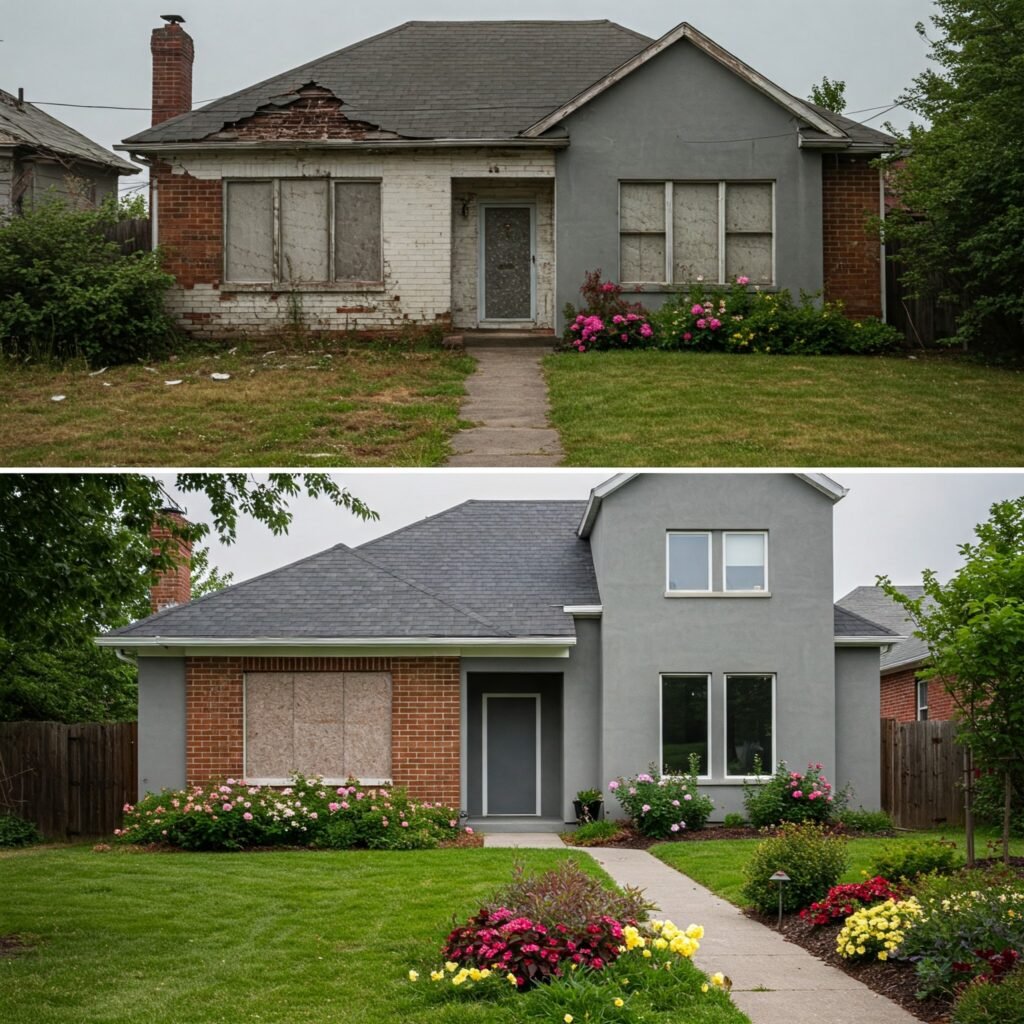Why flipping houses is a bad idea has become a crucial discussion among real estate investors. While buying, renovating, and selling a home for profit sounds appealing, the reality is often far more challenging. Many investors face unexpected costs, market fluctuations, and stressful project delays. If you are considering flipping houses, it’s essential to understand the risks involved before diving in.
1. Why Flipping Houses Is a Bad Idea Due to High Initial Investment Costs
One of the most significant reasons why flipping houses is a bad idea
Unforeseen Expenses Can Ruin Your Budget
Even if you find a home at a low price, unexpected costs—such as hidden structural issues, necessary permits, and contractor fees—can dramatically increase your budget. Many first-time flippers underestimate these expenses, leading to financial struggles.
Financing Challenges Add More Pressure
Securing financing for house flipping can be difficult, especially for new investors. Traditional mortgages are not always available for distressed properties, leading many flippers to rely on hard money loans with high interest rates. The cost of borrowing can significantly eat into potential profits.
2. Market Uncertainty Makes Flipping Houses Risky
The real estate market is highly unpredictable. Economic conditions, interest rates, and local property demand can change quickly, impacting home values.
Timing the Market Is Nearly Impossible
House flipping requires perfect timing. If the market shifts while you’re renovating, you may struggle to sell the home at a profit. Even experienced flippers cannot accurately predict market trends.
A Slow Market Can Leave You Stuck
If the real estate market slows down, selling a flipped property can take much longer than expected. Holding onto a property for months means additional expenses in mortgage payments, property taxes, and maintenance costs.
3. Financial Losses Are a Common Risk in House Flipping
While some investors succeed, many experience losses due to unexpected setbacks. Why flipping houses is a bad idea
Profit Margins Can Disappear Quickly
Hidden Costs Can Destroy Your Budget
Even with a well-planned budget, unexpected expenses such as mold removal, plumbing issues, or foundation repairs can add thousands of dollars to your costs. These surprises can quickly turn a potential profit into a loss.
4. Flipping Houses Requires a Significant Time Commitment
Unlike passive investments, flipping houses demands active involvement. Managing renovations, hiring contractors, and overseeing permits take considerable time.
Delays Are Common and Costly
Unexpected delays from contractors, material shortages, or permit approvals can increase holding costs. The longer a flip takes, the lower the profit margin.
Managing Multiple Contractors Is a Challenge
Coordinating multiple contractors and ensuring work is completed on time requires significant effort. If one task gets delayed, it can set back the entire renovation timeline, leading to increased expenses.

5. The Emotional and Mental Stress of House Flipping
Flipping houses is not just financially risky—it is also mentally exhausting. Dealing with renovations, unexpected problems, and tight deadlines can create significant stress.
Stress Levels Can Become Overwhelming
Every flip comes with challenges, from hidden mold to permit rejections. These unexpected obstacles can turn an exciting project into a nightmare.
The Pressure to Sell Quickly Adds Anxiety
Once renovations are complete, the pressure to sell the property quickly can be overwhelming. If the house doesn’t sell within the expected timeframe, flippers may need to lower the price, reducing their profit margin.
6. Holding Costs Can Wipe Out Profits
Flipping a house involves ongoing expenses such as mortgage payments, property taxes, insurance, and utilities.
Carrying Costs Add Up Quickly
If the home sits on the market for too long, these holding costs can drastically reduce profits, turning a promising investment into a financial drain.
Staging and Marketing Costs Are Often Overlooked
Many flippers forget about the additional costs of staging and marketing a home. Professional staging, real estate agent commissions, and advertising expenses can further reduce profit margins.
7. Inexperience Leads to Costly Mistakes
Many first-time flippers lack the knowledge needed to navigate real estate transactions and renovations successfully.
DIY Work Can Backfire
Some investors attempt DIY renovations to save money, but poor craftsmanship can lower a home’s value. Hiring professionals is often necessary, but it adds to overall costs.
Lack of Negotiation Skills Can Lead to Overpaying
Successful flippers must negotiate effectively with sellers, contractors, and buyers. Inexperience in negotiation can lead to overpaying for properties and renovation services, reducing overall profitability.
8. Tax Implications Can Reduce Profits
House flipping profits are subject to high taxes, which many new investors fail to consider.
Short-Term Capital Gains Tax Is High
Profits from flipping a house within a year are considered short-term capital gains and are taxed at a higher rate than long-term investments. This tax burden can significantly reduce overall earnings.
Unexpected Tax Liabilities Can Catch Investors Off Guard
Many house flippers don’t fully understand the tax implications of their sales, leading to unexpected tax bills. Proper tax planning is essential to avoid financial surprises.
9. Competition in House Flipping Is Increasing
More investors are entering the house-flipping market, making it harder to find profitable deals.
Finding a Good Deal Requires Extensive Research
With more competition, securing undervalued properties has become increasingly difficult. Many investors overpay for homes, assuming they can make a profit, only to discover that renovation costs are too high.
Experienced Flippers Have a Market Advantage
New investors often struggle to compete with experienced flippers who have established contractor relationships and better market knowledge. Without this advantage, profits can be significantly lower.
10. Alternative Investment Strategies May Offer Better Returns
Rather than flipping houses, investors may find more success in other real estate investment strategies.
Rental Properties Provide Consistent Income
Investing in rental properties can generate steady, long-term income with less risk. Unlike house flipping, rental income continues to grow over time, providing financial stability.
Real Estate Investment Trusts (REITs) Are a Passive Option
For those looking to invest in real estate without the hassle of flipping, Real Estate Investment Trusts (REITs) offer a passive way to earn returns. These investments provide exposure to the real estate market without the stress of property management and renovations.
Conclusion: Why Flipping Houses Is a Bad Idea for Most Investors
While house flipping might seem like an exciting opportunity, the risks often outweigh the rewards. Why flipping houses is a bad idea becomes evident when you consider financial risks, market unpredictability, high stress levels, and the need for significant time investment.
For most investors, alternative real estate strategies, such as rental properties, may provide more stable and sustainable returns. Before deciding to flip houses, carefully evaluate whether the potential rewards justify the risks.
Instead of chasing quick profits, investors should focus on building long-term wealth through strategies that offer consistent and predictable returns.
